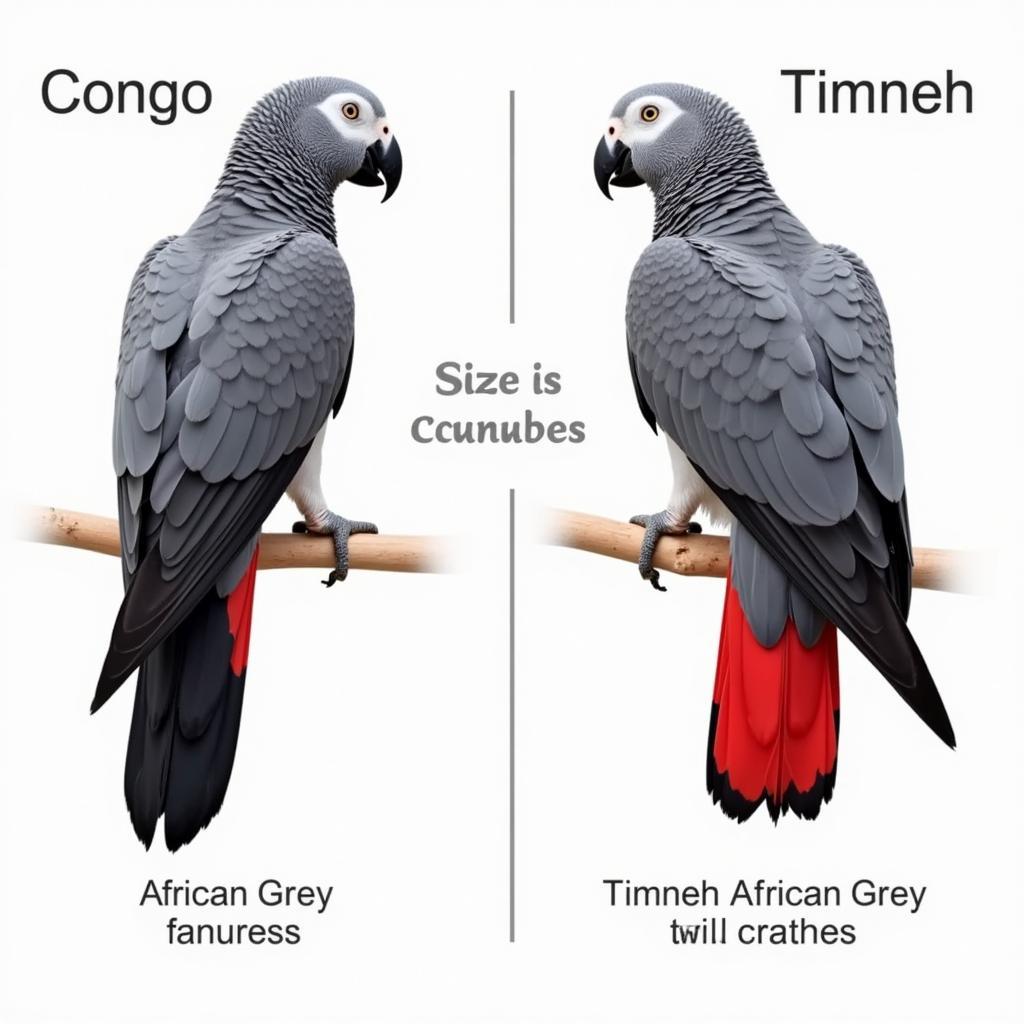Understanding African Grey Molting
African Grey Molting is a natural process where these intelligent birds shed old feathers to make way for new ones. It’s a vital part of their life cycle, but it can be a confusing time for owners who may be concerned about excessive feather loss or behavioral changes. This article will guide you through everything you need to know about African grey molting, helping you understand what’s normal and when to seek veterinary advice.
What is African Grey Molting?
Molting is essentially a feather replacement process. Just like humans shed hair, African greys shed their feathers periodically. This allows them to maintain a healthy plumage, essential for flight, insulation, and display. During the molting period, you’ll notice feathers dropping from your bird, often replaced by pin feathers, which are new feathers encased in a keratin sheath. african grey molting or plucking can sometimes be difficult to distinguish, so careful observation is crucial.
When Does African Grey Molting Occur?
African greys typically molt once or twice a year, although the exact timing and duration can vary depending on factors such as age, diet, and environmental conditions. african grey parrot molting season is usually influenced by changes in daylight hours and temperature. Young birds molt more frequently as they grow and develop their adult plumage. Knowing the african grey parrot molting period can help you prepare and provide the necessary support for your feathered friend.
How Long Does African Grey Molting Last?
The molting process typically lasts for several weeks to a few months. Some birds might experience a heavy molt, while others might have a more gradual feather loss. During this time, it’s essential to provide your African grey with a balanced diet, rich in vitamins and minerals, to support healthy feather growth.
Signs of African Grey Molting
Recognizing the signs of molting can help differentiate it from other feather loss issues like feather plucking. Common signs include:
- Increased feather drop: You’ll find more feathers in the cage and around the house.
- Pin feathers: These are new feathers emerging, often covered in a protective sheath.
- Itchiness: Your bird might be more prone to preening and scratching.
- Slight changes in behavior: Some birds might become a little more irritable or quieter during molting. african grey losing feathers is a natural process, but excessive feather loss could indicate underlying health problems.
Is My African Grey Molting or Plucking?
While molting is a natural process, feather plucking is a behavioral issue often caused by stress, boredom, or medical conditions. african grey feather plucking can lead to bald patches and skin irritation. If you suspect your bird is plucking its feathers, consult a veterinarian to rule out any underlying health problems and address the behavioral triggers.
Caring for Your African Grey During Molting
Providing the right care during molting can help your African grey through this demanding period. Ensure your bird has:
- A balanced diet: Offer a variety of fresh fruits, vegetables, and high-quality pellets.
- Regular bathing: This helps soften the keratin sheaths around pin feathers and reduces itching.
- A comfortable environment: Maintain a consistent temperature and humidity level.
- Plenty of rest: Molting can be tiring, so ensure your bird gets enough sleep.
Conclusion
African grey molting is a normal and essential part of your bird’s life. By understanding the process and providing the right care, you can help your feathered companion navigate this period comfortably and maintain a healthy, vibrant plumage. Recognizing the signs of african grey molting allows you to address any potential issues promptly and ensure your bird’s well-being.
FAQ
- How often do African greys molt? Typically once or twice a year.
- How long does molting last? Several weeks to a few months.
- Is molting painful for African greys? No, but it can be itchy.
- Should I be concerned if my African grey is losing a lot of feathers? Excessive feather loss could indicate a problem, so consult a vet.
- What should I feed my African grey during molting? A balanced diet rich in vitamins and minerals.
- Can I give my African grey supplements during molting? Consult your veterinarian before giving any supplements.
- How can I tell the difference between molting and plucking? Molting involves even feather loss and the presence of pin feathers, while plucking often results in bald patches.
Common Scenarios and Questions
- My African grey is losing feathers around its head. Is this normal? Feather loss around the head can be normal during molting, but if you notice bald patches, consult a vet.
- My African grey is very itchy during molting. What can I do? Provide regular baths and ensure a humid environment.
- My African grey seems depressed during molting. Is this normal? Some birds might become quieter during molting, but if you notice significant behavioral changes, consult a vet.
Further Reading
You might also find these articles helpful:
- African Grey Diet and Nutrition
- African Grey Behavioral Issues
- Understanding Parrot Body Language
When you need support, please contact Phone Number: +255768904061, Email: kaka.mag@gmail.com or visit our address: Mbarali DC Mawindi, Kangaga, Tanzania. We have a 24/7 customer service team.

